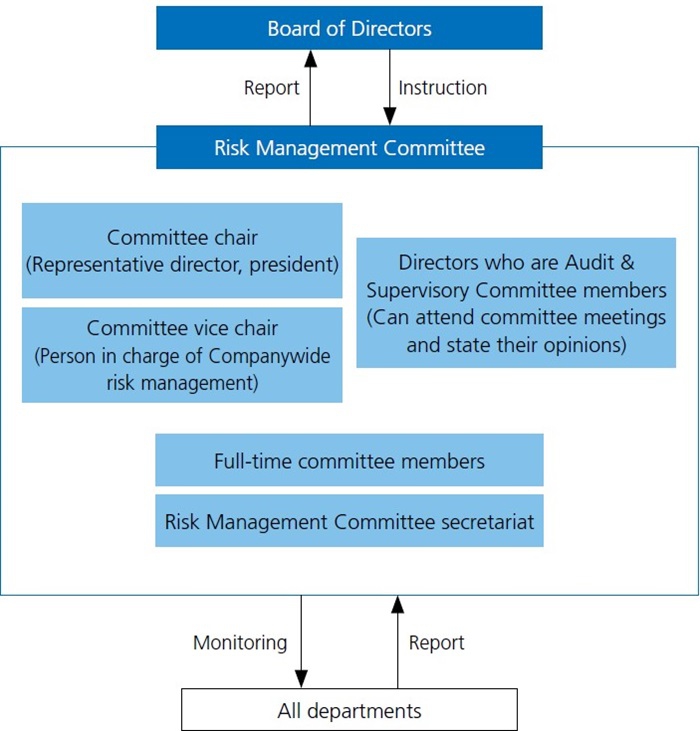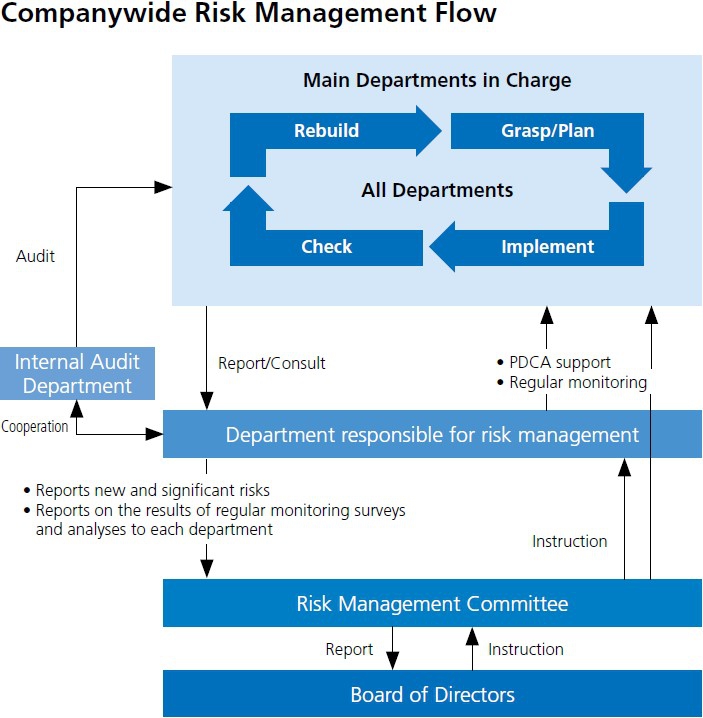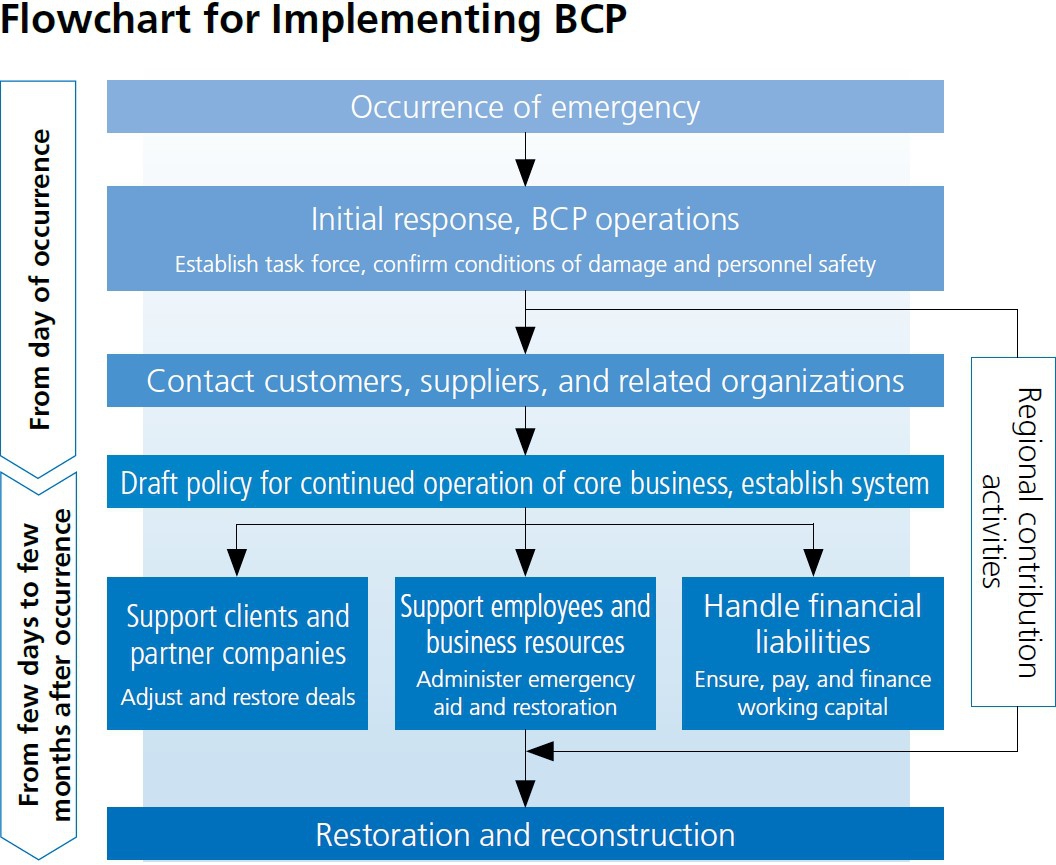Risk Management
Risk Management System
The Company has established a Risk Management Committee under the Board of Directors, which conducts Companywide risk management in accordance with the Risk Management Rules, to deal with events that may affect the achievement of business goals or sustainability management.
In the Company’s risk management system, the director of the Administration Division is responsible for Companywide risk management and conducts such management. In addition, the Risk Management Committee, chaired by the president, has been established as a deliberative body for risk management. The Risk Management Committee comprehensively grasps and evaluates risks that occur throughout the Group from the perspective of the entire organization and conducts activities to maximize corporate value, prevents risks from occurring, and minimizes losses after they occur. The committee met three times in fiscal 2023.
The department in charge of each risk item identifies risks, evaluates them, and implements countermeasures. The department in charge of risk management summarizes Companywide risks and monitors the implementation status and effectiveness of countermeasures, and the Internal Audit Department audits the effectiveness and response status.
Ascertaining of and Responding to Risks
The Company has created a Hirata Risk Map that broadly classifies 70 risk items into four categories: management process risks, which include governance; external factor risks such as market changes; indirect business process risks that cover human resources and IT systems; and direct business process risks related to business activities such as production. Based on the Hirata Risk Map, the Company has established the main department in charge of each risk item and put in place a mechanism whereby the information collected on assumed and incurred risks is aggregated by the department responsible for risk management.
From the aggregated risk information, the department responsible for risk management comprehensively evaluates the likelihood of the occurrence, magnitude of the impact, and priority of the risk. The Risk Management Committee then determines major risks and related measures, monitors the status of measures, and reports to the Board of Directors.
Business Continuity Plan (BCP)
We have formulated a Business Continuity Plan (BCP) to ensure business continuity or restore business operations in a short period of time in emergency situations. Through measures such as checking the safety of employees, confirming the damage status of buildings and information infrastructure at our business locations, investigating the damage status of suppliers, and ensuring the provision and review of procedures, as well as securing stockpiles at business sites, we aim not only to ensure the safety of employees but also to minimize the impact on our customers’ businesses, thereby contributing to our stakeholders. Furthermore, we conduct regular drills to confirm and improve the effectiveness of our initial response.
In fiscal 2023, we expanded our BCP procedure manual and conducted on-site earthquake scenario drills. Furthermore, by conducting such drills, we are working to promote understanding of the BCP among employees and others while ensuring the effectiveness of procedures, etc., to improve effectiveness.
Based on its BCP policy, the Company is working to prevent, defend itself against and mitigate risks. In the event of an emergency, the BCP organization will be central to the initial response and business continuity/recovery in accordance with the flowchart for implementing the BCP.
BCP Policy
To as far as possible avoid unexpected disasters or problems that could endanger business continuity, we plan to continue business by having extracted risks in advance, and preventing, defending ourselves against and mitigating those risks, and to restore business operations in a short period of time in emergency situations.
- Give top priority to the lives and safety of employees and their families.
-
Minimize any negative impact on our customers’ businesses.
-
Assist our stakeholders.
We review our Business Continuity Plan on a regular basis for continuous improvement.



